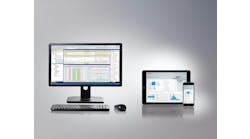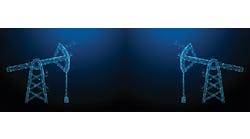I appreciated John Rezabek’s “When real-time data isn’t real” (Sept. ’19, p. 22), which is so very true in our experience.
As context, Seeq is an advanced analytics application and works with all types of historians (PI, PHD, IP21, etc.), but some customer requests seek to make good on what isn’t there (the data), or what is there (antiquated software) doesn’t make it easy for us. As a small example, read performance versus write and compression performance on many historians is not good enough for interactive analytics. So, all of Seeq’s expertise in the details of time-series analytics—predictive, diagnostic, monitoring and descriptive—isn’t enough, and we have to help solve underlying issues as well, such as data quality, performance, contextualization and networking.
Michael Risse
VP & CMO, Seeq
[email protected]
I really enjoyed and synergize with the mini-series “Get the picture” (Aug. ’19, p. 32). I personally believe that integration of automated (DCS/PLC) and manual procedures (SOPs) opens up new possibilities in automation that previously were too expensive to implement.
The cost of traditional automation is high on a per-loop basis relative to manual alternatives. The largest cost factor is field instrumentation, be it sensors or controllers. Because of this cost limitation, a large portion of these field devices are locally read or manually actuated by people.
Emerging technologies are now challenging the traditional paradigm of wired (and wireless) automation by creating a class of instrumentation I designate as “virtual I/O.” These are digital inputs and digital outputs viewed and operated by people with “virtual,” meaning human senses and human physical movement, substituted for electronic sensors and digital motor starters or valve actuators.
By integrating in real time (read from and write to the process control computer), these manual activities via remote HMI (wearable) and locally provided work instruction, higher levels of procedural automation can be accomplished without installing traditional I/O hardware. This lowers the cost of procedural automation to as little as 40% of the cost of traditional automation techniques for discrete sensing and controlling loops.
I believe this technology will enable a cost breakthrough in the implementation of procedural control (ISA 88/106), and deliver safer and more consistent process execution by reducing human factors errors inherent in a manual work instruction environment at a third of the cost.
For example, a remotely executed procedure in the field is in constant communication with an existing process control computer that acts as a “watchdog” over manually executed tasks. Using the features of augmented reality, manual task completion is identified and confirmed via a wearable camera, and transmitted to the process control system through secure communications. These communications are translated into permissives consumed by the BPCS to interlock and potentially inhibit improper behaviors, as well as send alerts of discrepancies in manual procedure execution.
Mike Williams
Associate, ARC
[email protected]
Latest from Data Acquisition

Leaders relevant to this article:



